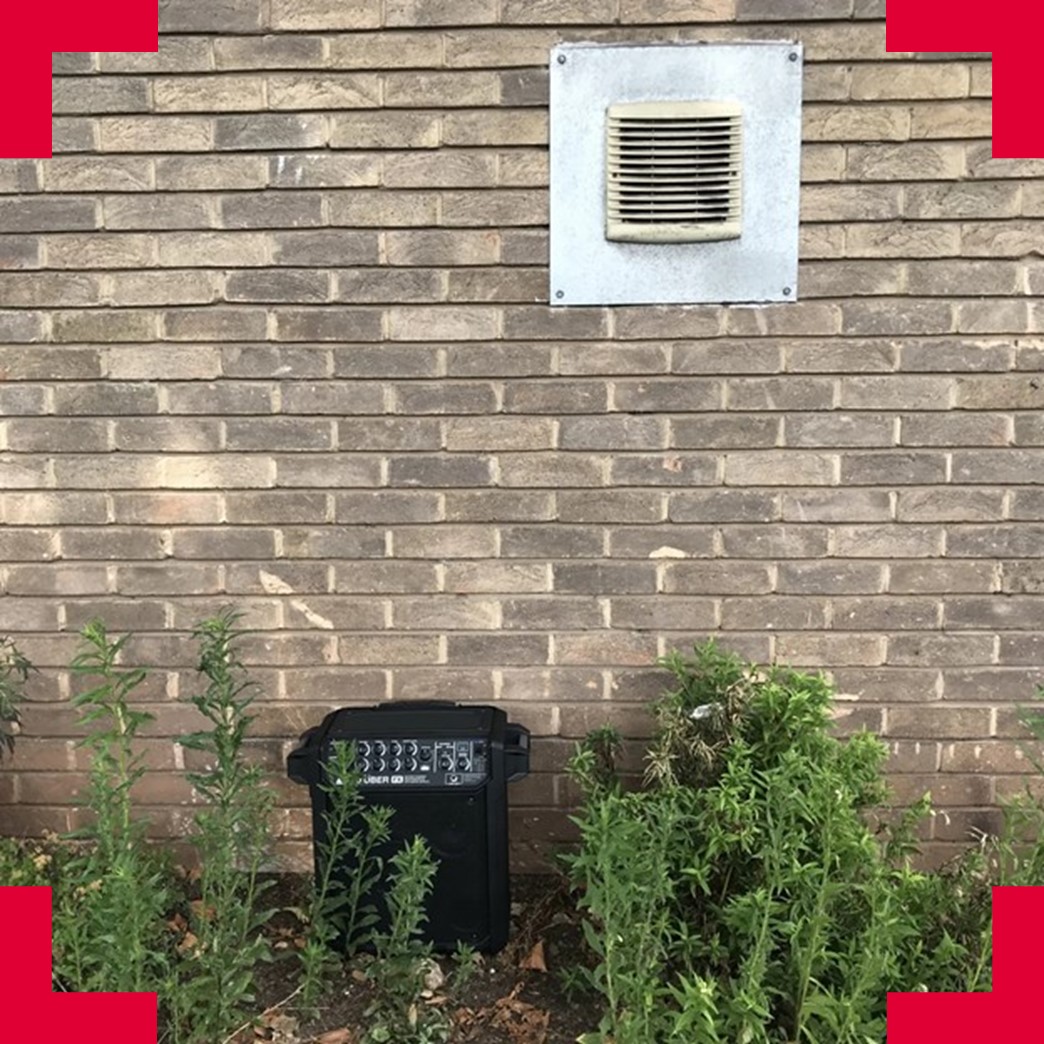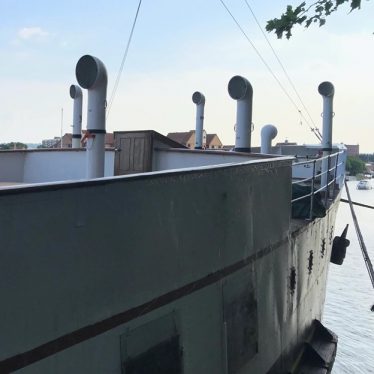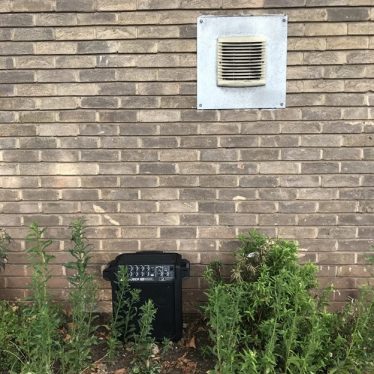Urban Sound Pollution – Beyond the decibel
by Jameson Musyoki, Joshua Taylor and Pete Bennett from Building Instruments

The ‘Building Instruments’ project was created to explore how we might sculpt soundscapes around the public’s perception of acoustic comfort.
To do this we put together a team of people from very different and complimenting disciplines:
- Ainolnam Azizol – Sonic Researcher (Intern)
- Pete Bennett – Digital Artist and researcher
- Jameson Musyoki – Acoustician
- Szabina Orosz – Qualitative Researcher (Intern)
- Joshua Taylor – Principle Investigator
Urban areas are designed and redesigned in order to meet the needs of residents and visitors. Over time, pavements or roads get widened, green areas are introduced, supermarkets and workspaces are constructed, to name a few. The design of the spaces is highly multidisciplinary involving town planners, engineers and architects. An important aspect of urban design is in considering how noise can affect people. According to the World Health Organisation (2018, p. 2), noise is the second most potent pollutant in our environments. However, focussing on noise alone neglects the full picture of how a space is used, perceived and by people.

International ISO and British Standards evolved from considering only noise in terms of the Decibel (dB) sound level measurement unit, to considering the acoustic environment and context in a more holistic way which can be used to consider the effect of sound on the health and wellbeing of citizens. ISO 12913 Part 1 (2014, p. 1) describes the soundscape as the peoples’ perception of an acoustic environment while taking the context of the surroundings into consideration. By defining noise as unwanted sound, acousticians afford themselves some flexibility to consider urban areas in terms of unwanted and comfortable sounds that contribute to a space’s soundscape. This way they can advise how to mitigate unwanted sounds and perhaps introduce some well fitting and pleasant sounds to help mask the unpleasant noise.

The ‘Building Instruments’ project was created to explore how we might sculpt soundscapes around the public’s perception of acoustic comfort. At the start of the project we found the key was simplicity and by setting a broad scope. We were able to keep focus and adapt to the needs of our research project.
How can we create acoustic environments that evoke positive feelings using sonic art installations and therefore potentially improve wellbeing?
First Steps
We set ourselves a broad scope to guide a Building Instruments’s narrative towards creating positive acoustic environments for the public.
We approached Design West with our proposal which included mapping perceptions of the acoustic environment of Bristol, creation of sonic art installations and then presenting a soundwalk exhibition for Bristol Open Doors, where members of the public walk on a predetermined route listening to and reflecting on the acoustic environment, inclusive of sonic art installations. We also reached out to Landsmith Associates (founders of Bristol Soundwalks) who already contribute to mapping the perceptions of the acoustic environment of Bristol through use of the Hush City App.
Our first cohort meeting with the Brigstow Institute encouraged us to explore beyond this linear thought process and pose further collaborative questions touching on ideas behind the politics of environmental sound, something that we would take on-board whilst creating our reading list, which of course would be guided by our broad scope.
Team Perspectives
Our first brainstorm was just after a COVID-19 lockdown. We decided to do the right thing and have a brainstorm coffee – in a real cafe! By this time Brigstow had facilitated the provision of two more researchers to the team and we had already started understanding each of our perspectives of the project and brainstorming. Keeping things simple also made our collaborative efforts go further.
Our project was designed to look beyond the current soundscape design standards (ISO 12913-1, 2 & 3) and to understand how sonic art interventions could be designed into spaces, inclusive of assessing their effectiveness in evoking positive emotion of passers-by. One key issue we realised was that technical terms and methodologies needed to be coherent across disciplines. For example, I myself (Jameson) am an acoustician and have a strong interest in more than just the Decibel to describe the sonic environment. During the project I was eager to understand how to apply citizen science and qualitative analysis theories to gather information on people’s perception of the acoustic environment. Although the team agreed we wouldn’t be able to gather enough data required for a robust analysis we could still get a flavour of how acoustic environments may be generally perceived.
It was also useful to realise that the term ‘soundscape’ itself has a few definitions, the earliest being R. Murray Shafer (1977, p. 274) which included any physical or abstract (e.g. musical) sound environment to be studied, and the most current within ISO 12913-1 (described earlier) which includes capture of human perception as paramount. Understanding could then be shared with Ainolnam Azizol and the sonic artists who also defined the soundscape differently, solely as the sonic space created within a musical composition or sound design. This then allowed coherence as our project intended to use the ISO definition for soundscape to understand how members of the public may perceive the sound art installations we intended to create.
Initial Ideas – wider broad scope
Alongside our brainstorming sessions and development of a literature review, we experimented. For example, we explored how to modulate unpleasant urban mechanical sounds into something more musical or meditative, as well as, getting stuck into the creation of instruments that would make (hopefully pleasant) sound whilst blowing in the wind, and also a plate reverb that could amplify everything! We also tried flipping the narrative from positive to negative to provoke conversation. ‘How would people perceive the sound of the M32 being played through loudspeakers within Cabot Circus’? Art, as we know, can be used to cause a reaction from an audience. So evoking a negative reaction, we thought, could be an interesting counter-experiment to pursue. However, awareness of the ethics behind subjecting the general public to something unpleasant, even though for the most benevolent reasons, caused us to not pursue this notion further moving forward.
Pushing forward and keeping our research question in mind, we reestablished the key objectives of the project as a basis for content for our literature review and our overall project aim:
- Capture views of the public to noise (the map)
- Improve soundscape by using (interactive) instruments (in sound installation form)
- Measure views of altered soundscape during exhibition
From this point we then went on to turn the Vision into Reality……..
References
- British Standards Institution (2014). ISO 12913 Part 1, 2014: Acoustics — Soundscape — Part 1: Definition and conceptual framework. London: British Standards Institution.
- Schafer, R. Murray (1977). The soundscape: our sonic environment and the tuning of the world. Rochester: Destiny Books
- World Health Organisation (2018). Environmental Noise Guidelines for the European Union Available at: https://www.euro.who.int/__data/assets/pdf_file/0008/383921/noise-guidelines-eng.pdf

